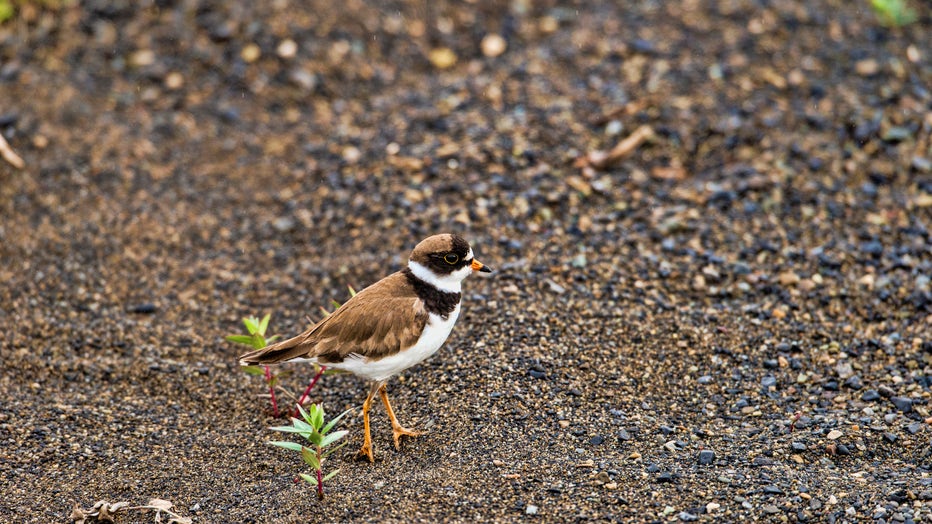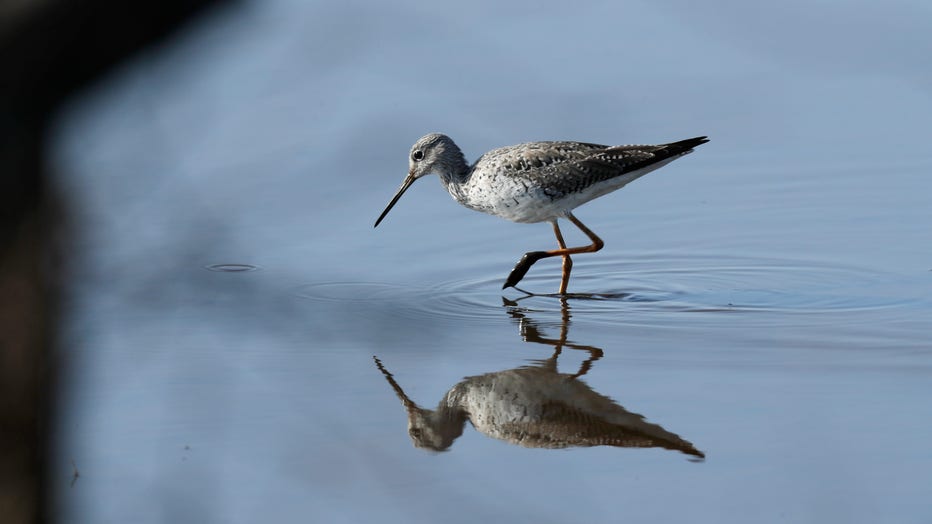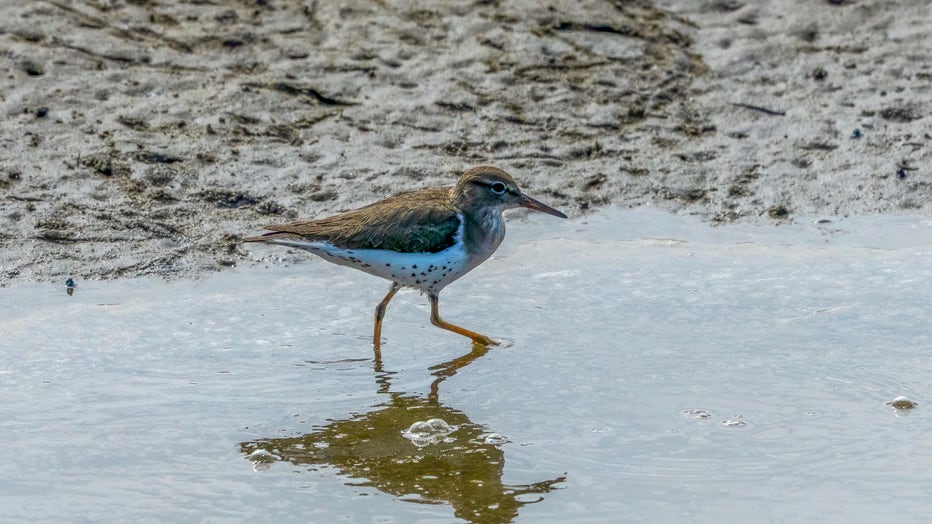Great Lakes fall shorebird migration - a guide to the species passing through Michigan
WELLS, ME - MAY 23: A piping plover forages on Wells Beach on Saturday. There are a record number of the endangered shorebirds nesting in Maine this year. Wells Beach has nine nests, with seven of those active. The Wells jetty path to the beach is cl
(FOX 2) - As summer progresses, new fledglings across the Great Lakes region are leaving their nests and learning what it means to be a bird.
Mid-July marks the beginning of the fall shorebird migration, with early migrants moving through Great Lakes coastal mudflats, wetlands, beaches, and flooded fields into August, preparing to fly as far south as the coasts of Chile and Argentina.
According to Audubon Great Lakes, migratory birds rely on the water, food, and shelter provided by Great Lakes wetlands along the coast and inland around lakes, ponds, rivers, and streams during their long journeys.
Over the next month, here are a few Great Lakes migratory shorebirds to look for, with tips on how to identify them as many will be molting out of their breeding plumage:
Piping Plover
The endangered Piping Plover has a pale grey back and head cap, and non-breeding adults and juveniles lack a complete breast band. Female Piping Plovers head south in mid-July, leaving their mates to finish raising the chicks. Help protect this shorebird by giving it space to nest and rest during its migratory journey.
Semipalmated Plover
The small Semipalmated Plover is often mistaken for the Piping Plover, but can be distinguished by its darker overall coloration and complete breast band.

Semipalmated plover, plover, Charadrius semipalmatus, bird, Alaska, USA, . (Photo by: Prisma Bildagentur/Universal Images Group via Getty Images)
Least Sandpiper
This sandpiper has brownish plumage with yellow legs and a smudgy brown breast.

Least Sandpipers skim the surface of San Gabriel River that flows through eastern part of Whittier Narrows Nature Area in South El Monte. (Photo by Irfan Khan/Los Angeles Times via Getty Images)
Semipalmated Sandpiper
The Semipalmated Sandpiper has a stouter bill and black legs, and is slightly larger than the Least Sandpiper. Its back is also slightly greyer in color.
Greater Yellowlegs
Greater Yellowlegs are often mistaken for Solitary Sandpipers, but can be distinguished by their larger size and longer, bright yellow legs.

A Greater Yellowlegs searches for food on Grizzly Island In Suisun Marsh outside Fairfield, Calif., on Monday, March 22, 2021.Suisun Marsh is the largest contiguous brackish marsh on the west coast of North America, and a local energy company is look
Lesser Yellowlegs
The Lesser Yellowlegs, which is smaller and has a shorter, thinner bill, and less neck streaking, can be challenging to distinguish from the Greater Yellowlegs.

Lesser Yellowlegs, Tringa flavipes, Katmai, Alaska. (Photo by: David Tipling/Education Images/Universal Images Group via Getty Images)
Spotted Sandpiper
During the fall shorebird migration, this sandpiper can often be seen walking in a crouched position and bobbing its tail up and down almost constantly. As it molts out of its breeding plumage, the spots on its breast and belly disappear.

A Spotted Sandpiper, Actitis macularius, in a wetland marsh in the South Padre Island Birding Center in Texas. (photo by: Jon G. Fuller/VW Pics/ Universal Images Group via etty Images)

